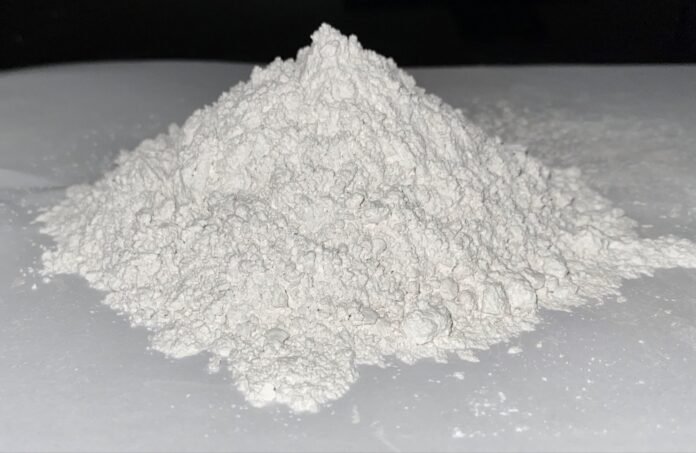Introduction
Pyrophyllite Powder exporter in India, Anand Talc, is pioneering innovative and safe uses of Pyrophyllite Powder in various industries. While it is traditionally known for its applications in ceramics and paints, its potential in the culinary world is gaining attention. This versatile mineral offers unique properties that can enhance cooking techniques and food presentation. In this article, we explore the safe and innovative uses of Pyrophyllite Powder in cooking, providing insights into how it can be effectively incorporated into the culinary arts.
What is Pyrophyllite Powder?
Pyrophyllite Powder is a naturally occurring mineral composed of aluminum silicate. It is renowned for its talc-like softness and excellent heat resistance. These characteristics make it a valuable ingredient in various industries, including the paint and ceramic sectors. However, its non-toxic nature and ability to withstand high temperatures have paved the way for its culinary applications.
Safety of Pyrophyllite Powder in Cooking
Safety is a paramount concern when introducing any new substance into cooking. Pyrophyllite Powder, when processed to food-grade standards, is safe for use in culinary applications. Its non-toxic and inert properties ensure it does not react with food ingredients, making it a suitable choice for various innovative uses in the kitchen.
Ensuring Food-Grade Quality
For Pyrophyllite Powder to be used in cooking, it must be processed to meet food-grade quality standards. This involves rigorous testing and purification to eliminate any contaminants. Anand Talc, as a leading Pyrophyllite Powder exporter in India, ensures that their products meet the highest safety and quality standards, making them suitable for culinary use.
Innovative Uses of Pyrophyllite Powder in Cooking
Heat-Resistant Cooking Surfaces
One of the most exciting applications of Pyrophyllite Powder in cooking is the creation of heat-resistant cooking surfaces. When used as a coating for cookware or baking surfaces, it can withstand high temperatures without breaking down or emitting harmful substances. This makes it ideal for use in high-heat cooking methods such as baking, grilling, and frying.
Enhancing Food Presentation
Pyrophyllite Powder can also be used to enhance food presentation. Its fine texture and ability to withstand heat make it a perfect dusting powder for decorating baked goods and desserts. Chefs can use it to create intricate designs and patterns on cakes, pastries, and other confections, adding a touch of elegance and sophistication to their creations.
Improving Dough Handling
In baking, Pyrophyllite Powder can be used to improve dough handling. When added in small amounts to dough, it can enhance its elasticity and workability, making it easier to shape and mold. This is particularly beneficial in the preparation of delicate pastries and bread where precision and texture are crucial.
Pyrophyllite Powder for the Paint and Ceramic Industry
While its culinary uses are innovative, it’s essential to recognize the primary industries where Pyrophyllite Powder has long been valued. Pyrophyllite Powder in the paint industry is used as a filler to improve the durability and finish of paints. Its ability to enhance the smoothness and gloss of paint surfaces makes it a preferred choice for high-quality coatings.
Similarly, in the ceramic industry, Pyrophyllite Powder plays a crucial role. It is used in the production of ceramics to improve their thermal stability and mechanical strength. The addition of Pyrophyllite Powder in ceramic formulations enhances their resistance to heat and wear, making them suitable for a wide range of applications.
Incorporating Pyrophyllite Powder in Culinary Recipes
Recipe: Pyrophyllite Powder Crust Pizza
Here’s a simple recipe to showcase the use of Pyrophyllite Powder in cooking:
Ingredients:
- 2 cups all-purpose flour
- 1 teaspoon salt
- 1 teaspoon sugar
- 1 packet dry yeast
- 1 tablespoon Pyrophyllite Powder
- 1 cup warm water
- 2 tablespoons olive oil
- Your choice of pizza toppings
Instructions:
- In a large bowl, combine flour, salt, sugar, and Pyrophyllite Powder.
- Dissolve yeast in warm water and let it sit for 5 minutes.
- Add the yeast mixture and olive oil to the dry ingredients.
- Knead the dough until smooth and elastic.
- Let the dough rise in a warm place for 1 hour.
- Preheat your oven to 475°F (245°C).
- Roll out the dough on a Pyrophyllite Powder-coated baking surface.
- Add your favorite toppings.
- Bake for 12-15 minutes or until the crust is golden brown.
Recipe: Decorative Pyrophyllite Powder Pastries
Ingredients:
- 1 sheet puff pastry
- 1 egg, beaten
- 1 tablespoon Pyrophyllite Powder
- Powdered sugar for dusting
- Fresh berries for garnish
Instructions:
- Preheat your oven to 400°F (200°C).
- Roll out the puff pastry on a lightly floured surface.
- Cut the pastry into desired shapes.
- Brush the tops with beaten egg.
- Dust with a light layer of Pyrophyllite Powder.
- Bake for 10-12 minutes or until golden brown.
- Allow to cool, then dust with powdered sugar and garnish with fresh berries.
Conclusion
As a leading Pyrophyllite Powder exporter in India, Anand Talc is at the forefront of introducing this versatile mineral to the culinary world. Its unique properties offer innovative and safe uses in cooking, from heat-resistant surfaces to enhancing food presentation. While Pyrophyllite Powder continues to play a vital role in the paint and ceramic industries, its potential in culinary applications is just beginning to be explored. By adhering to stringent safety standards and leveraging its remarkable characteristics, Pyrophyllite Powder opens new possibilities for chefs and food enthusiasts alike.


